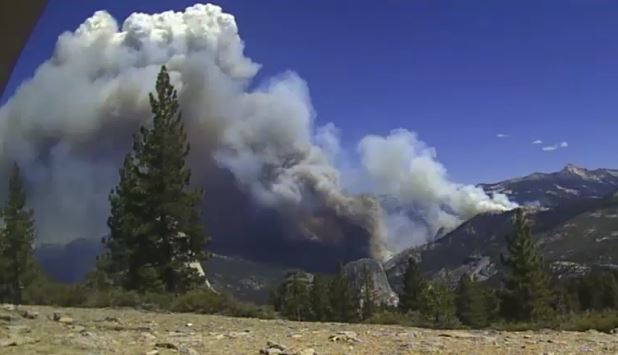The Montana firefighter that was missing overnight has been found.
(UPDATED at 8 p.m. MDT, July 28, 2014)
The missing firefighter that got separated from his crew overnight in Montana has been identified as 30-year old Justin Wall, in his fourth summer fighting fire with the Bitterroot National Forest.
When he was found at 3 p.m. today he did not have any obvious injuries, but was described as “disoriented” and very hungry by the searchers who discovered him. As this is written Monday evening Mr. Wall is still in the hospital in Hamilton, Montana undergoing a CT Scan and other tests, according to U.S. Forest Service spokesperson Tod McKay.
The search involved multiple aircraft and more than 50 searchers on the ground. Ravalli County Search and Rescue was assisted by the Bitterroot National Forest, Ravalli County Sheriff’s Office, Beaverhead-Deerlodge National Forest, and Granite County Search and Rescue.
“We are so thankful and relieved that Justin was found today and is in stable condition,” said Bitterroot National Forest Supervisor Julie King. “I would like to thank Ravalli County Search and Rescue and all the volunteers and organizations who assisted with this search. It was because of their quick response, teamwork, and professionalism that this search ended positively.
****
(UPDATED at 3:19 p.m. MDT, July 28, 2014)
The firefighter that had been missing since Sunday, July 27, has been found walking on Skalkaho Rye Road three miles from where he was last seen. Initial information from U.S. Forest Service sources reported that the firefighter was not injured and did not need medical assistance, but later information said he was transported to Marcus Daly Memorial Hospital in Hamilton, Montana.
While the crew was hiking 1.5 miles in to the fire on Sunday, he was lagging behind and told the supervisor that he was having trouble with his boot and would catch up with them later. The rest of the crew continued to the fire, but when he did not show up they began searching for him.
****
(Originally published at 11:23 a.m. MDT, July 28, 2014. This article will be updated as more information is available.)
A wildland firefighter working on a fire on the Bitterroot National Forest in Montana is missing. Tod McKay, the Public Affairs Officer for the Bitterroot National Forest, said the firefighter was a member of an eight-person hand crew working out of Darby, Montana mopping up the one-acre Weasel Fire Sunday afternoon July 27 when reported missing. The other firefighters began a search and notified Ravalli County Search and Rescue, which is continuing the effort today.
The Weasel Fire is about 10 miles east of Hamilton and 40 miles south of Missoula near the border of the Bitterroot and Beaverhead/Deerlodge National Forests. The fire had been contained on Saturday and was being checked and mopped up by the Darby crew on Sunday.
In August of last year another U.S. Forest Service firefighter was reported as missing while fighting a fire in New Mexico. Seven days later the body of Engine Captain Token Adams was found, the victim of a fatal all terrain vehicle crash. That fatality prompted additional discussion about systems that could track the location of firefighters.
We hope there will be a better outcome for this latest missing firefighter.





